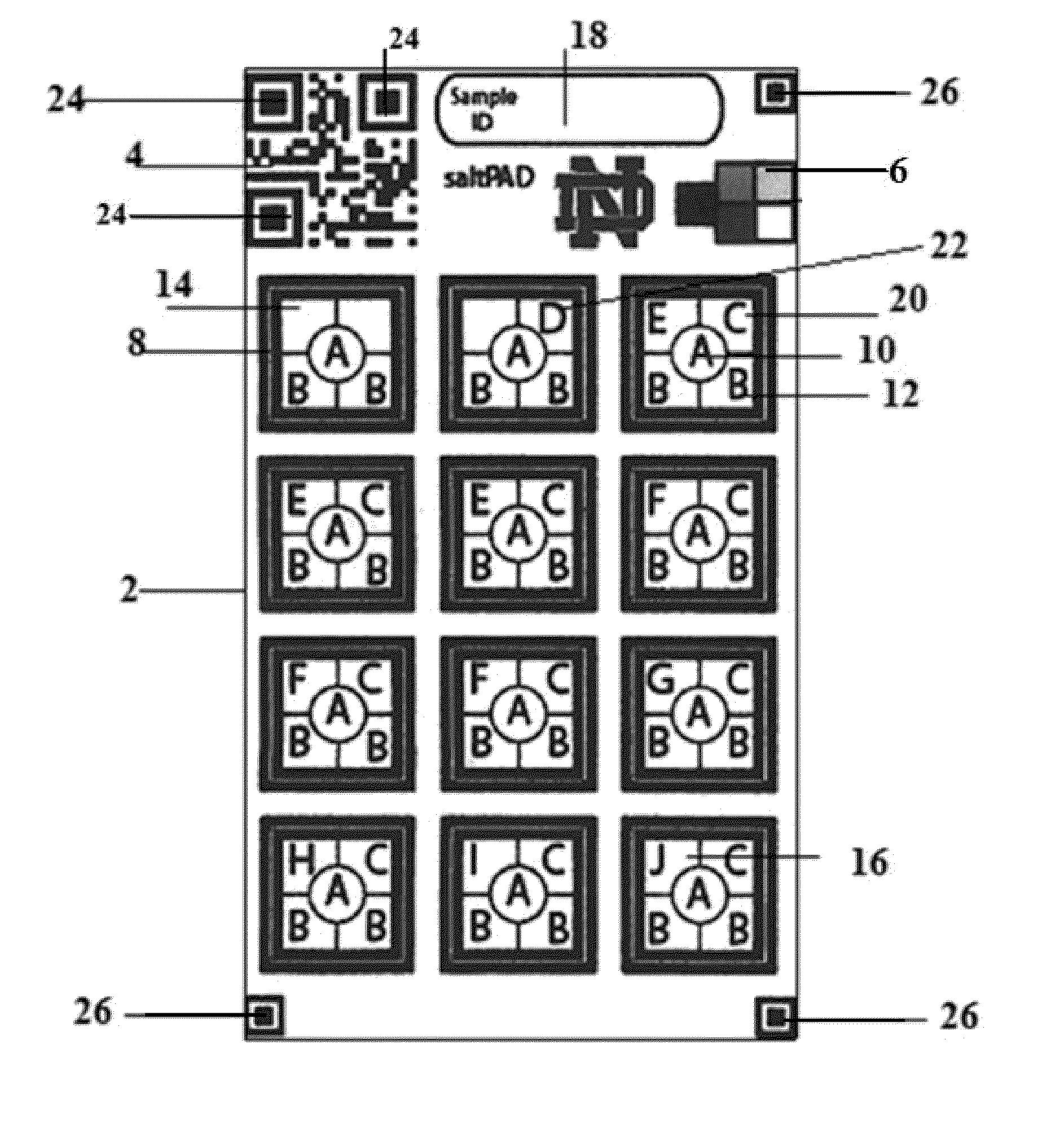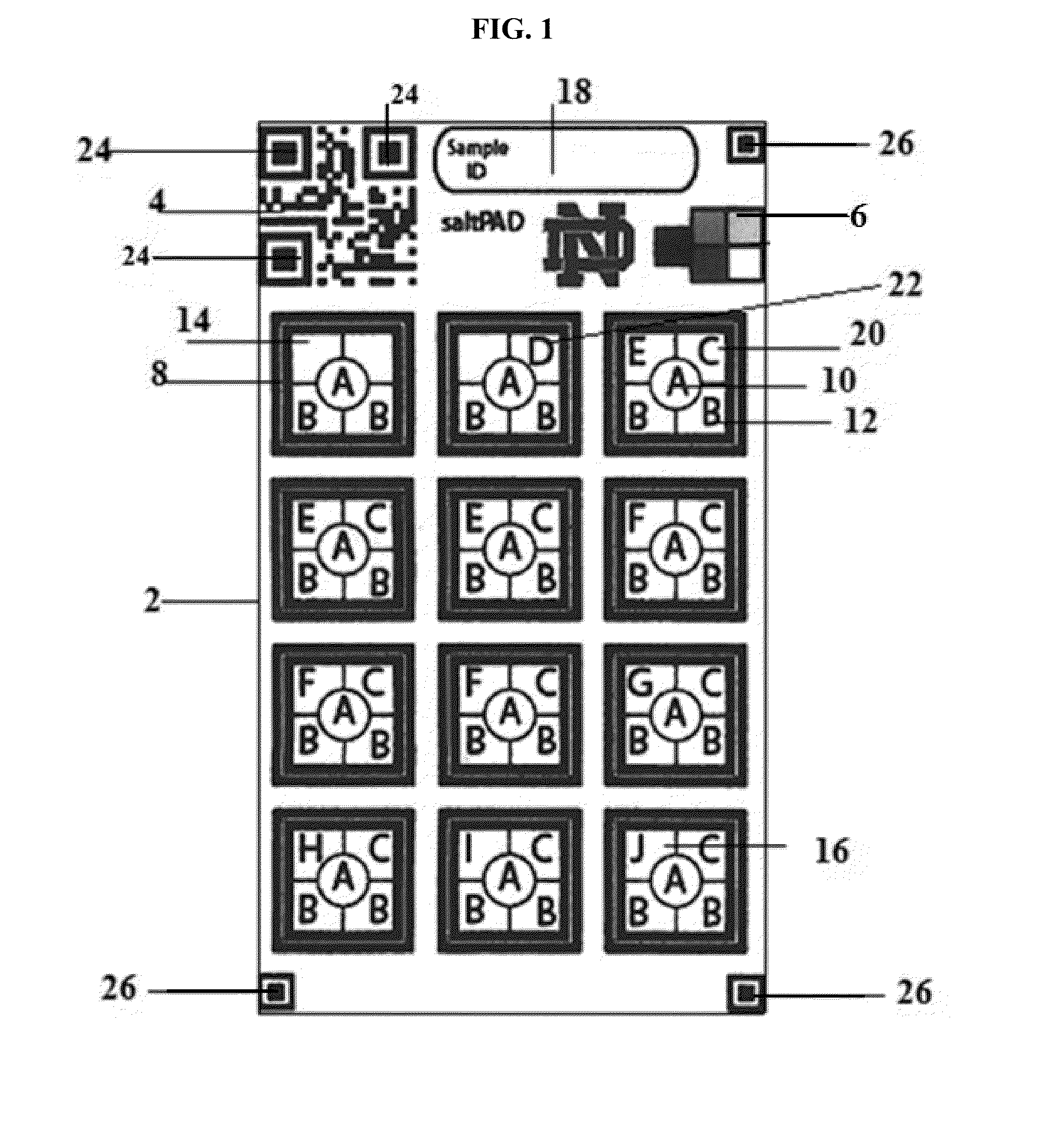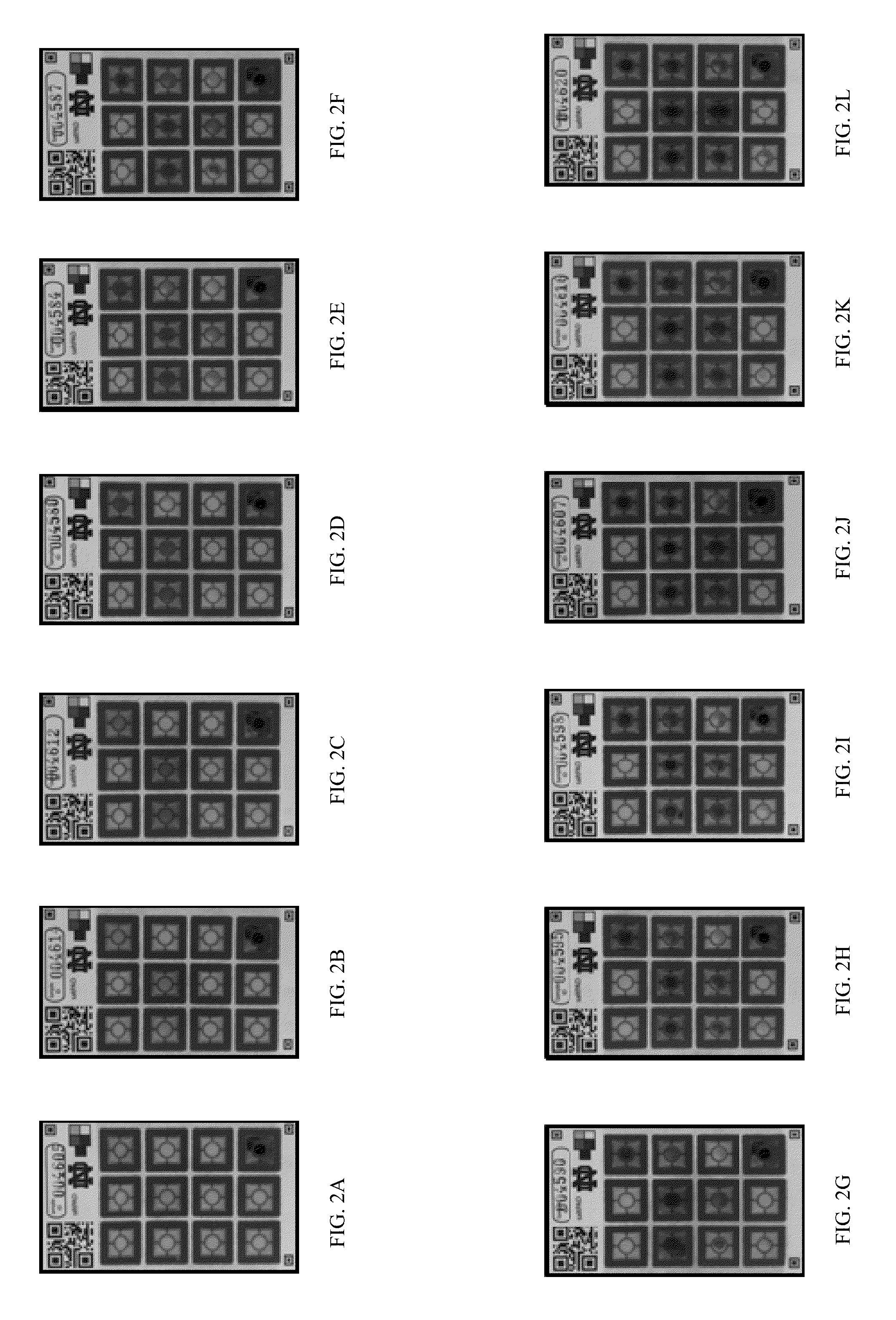Ppm quantification of iodate using paper device
a technology of iodate and paper device, which is applied in the field of ppm quantification of iodate using paper device, can solve the problems of time and expense of testing for iodized table salt, inadequate or inconsistent levels of iodine, and deter manufacturers, distributors, etc., to achieve the effect of facilitating analysis and processing of color information, facilitating the detection and quantification of nutritional supplements, and superior chemical parameters
- Summary
- Abstract
- Description
- Claims
- Application Information
AI Technical Summary
Benefits of technology
Problems solved by technology
Method used
Image
Examples
example 1
Part Per Million Iodometric Titration on PAD
[0085]In a regular iodometric titration increasing amounts of thiosulfate is titrated into the sample until the equivalence point is reached according to equations (i)-(iv). In the saltPAD (2) iodometric titration as depicted in FIG. 1 each of the twelve reaction zones (8) is loaded with a different concentration of thiosulfate as set forth in Table 1 along with an excess of potassium iodide (16), acid (12) and starch indicator (10). Excess iodide reacts with iodate in the salt forming tri-iodide. If the amount of tri-iodide exceeds the amount of thiosulfate in the reaction zone on the PAD (2), the color of the starch indicator (10) will turn blue. In case that the amount of tri-iodide is smaller than the thiosulfate amount, the starch indicator (10) will be uncolored.
[0086]Eleven different levels of iodate amounts disposed on the saltPAD (2) were first interpreted by eye to determine the inter-operator precision, which is depicted in FIGS...
example 2
Determination of the Accuracy and Precision of the PAD Method
[0091]Now referring to FIG. 4 in order to determine important analytical parameters, the accuracy and precision of the saltPAD (2) and the method were analyzed. After construction of the calibration curves as illustrated in FIG. 3, sodium chloride brine was subsequently spiked with eleven different known amounts of iodate levels, and the samples were analyzed blind by two individual operators, who each applied test samples, ran the replicate saltPAD (2) test cards and subsequently evaluated the saltPAD (2) test card results independently for 5-fold dilution replicates. In total 110 saltPAD (2) test cards were used for the determination of the accuracy and the precision.
[0092]For determining the average absolute accuracy for the saltPAD (2) test cards, the following equation (1) was used:
∑i=1nXreal-Xmeasuredn.(1)
[0093]The Xreal is the known concentration of the different levels of the iodate, Xmeasured is the saltPAD (2) re...
example 3
Determination of the Stability and Robustness of the PAD Method
[0097]In order to test the stability and the robustness of the saltPAD (2), storage of the saltPADs (2) and different water sources were tested to evaluate the saltPAD (2) response, which is depicted in FIG. 6. SaltPADs (2) were packed in Ziploc bags and they were wrapped in aluminum foil to exclude light, and subsequently stored in a 40° C. convection oven for several weeks and up to a final time-point of 90 days. The saltPAD (2) response was tracked over time by analyzing a low, moderate, and high amount iodate standard level reflected by an iodate amount of 2.0, 5.0, 8.0 and 13.0 ppm respectively. An 8.0 ppm iodate standard was made up in a matrix of 3.7 M salt in tap water with a high mineral content, >180 ppm, and also in a matrix of water having a high content of natural organic matter. Each point is the average response of 3 saltPAD (2) test cards and also shown is a one standard deviation from the average saltPAD...
PUM
| Property | Measurement | Unit |
|---|---|---|
| hydrophilic | aaaaa | aaaaa |
| color | aaaaa | aaaaa |
| concentrations | aaaaa | aaaaa |
Abstract
Description
Claims
Application Information
 Login to View More
Login to View More - R&D
- Intellectual Property
- Life Sciences
- Materials
- Tech Scout
- Unparalleled Data Quality
- Higher Quality Content
- 60% Fewer Hallucinations
Browse by: Latest US Patents, China's latest patents, Technical Efficacy Thesaurus, Application Domain, Technology Topic, Popular Technical Reports.
© 2025 PatSnap. All rights reserved.Legal|Privacy policy|Modern Slavery Act Transparency Statement|Sitemap|About US| Contact US: help@patsnap.com



